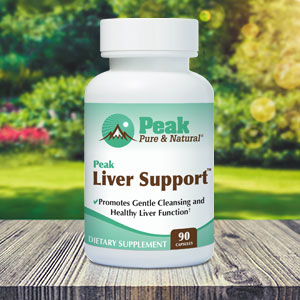Get Easy Health Digest™ in your inbox and don’t miss a thing when you subscribe today. Plus, get the free bonus report, Mother Nature’s Tips, Tricks and Remedies for Cholesterol, Blood Pressure & Blood Sugar as my way of saying welcome to the community!
The supplement that guards against non-alcoholic fatty liver disease

Too few of us give our liver the credit and care it deserves. In 2018 there were nearly 3 million liver-related deaths. Roughly half were due to nonalcoholic fatty liver disease, the most common chronic liver disease, for which there is no treatment. That may be about to change, thanks to a simple amino acid.
Recent research has identified a natural, readily available substance that appears to offer big liver benefits in the battle against nonalcoholic fatty liver disease (NAFLD). It may even reduce the risk of diabetes and provide some heart health TLC…
The amino acid that could protect against fatty liver disease
Glycine is an amino acid that your body uses to create the proteins it needs for tissue growth. Your body also uses glycine to make the hormones and enzymes that keep your things running.
You can supplement the glycine your body manufactures by eating protein-rich foods, or by taking a dietary supplement.
In a study led by Dr. Oren Rom, a research fellow at the Michigan Medicine Frankel Cardiovascular Center, scientists found that people who develop NAFLD often have low levels of glycine.
The researchers used mice to demonstrate that a tripeptide known as DT-109, made of glycine and other amino acids, improved the fat ratio and other health measures in mice.
Naturally, more research is needed on humans to see how effective this treatment is. But the research team is hopeful that DT-109 could hold the key to treatment for NAFLD.
According to Lead author Oren Rom, Ph.D., R.D., a research fellow at the Michigan Medicine Frankel Cardiovascular Center “In particular, lower circulating glycine is consistently reported in patients with NAFLD and related comorbidities including diabetes, obesity and cardiovascular diseases. Our studies not only offer a metabolic explanation for defective glycine metabolism in NAFLD, but also uncover a potential glycine-based treatment.”
What else glycine can do for you, and how to get it
Glycine has also been studied for other potential benefits: improving gut, heart and muscle health, controlling inflammation and preventing diabetes.
Foods high in this amino acid aren’t hard to come by. They include turkey, chicken and whitefish, as well as gelatin and pumpkin seeds.
And glycine is readily available as a dietary supplement in capsule or powder form. If you don’t like taking pills, the powder form dissolves easily in water and has a sweet taste.
In fact, the name glycine is derived from the Greek word for “sweet.” Due to its sweet taste, you can easily incorporate glycine powder into your diet by adding it to:
- Coffee and tea
- Soups
- Oatmeal
- Protein shakes
- Yogurt
- Pudding
There are other ways to protect your liver from NAFLD, like maintaining a healthy weight, and watching your fat intake, opting for more protein when you can, as well as supplementing with turmeric and milk thistle.
Sources:
Amino acid connected to NAFLD could provide treatment clues — Eureka Alert
17 benefits of glycine supplements + dietary sources — Self Hacked
Liver disease is leading cause of death among people with NAFLD — hepmag.com
Top 9 benefits and uses of glycine — Healthline













